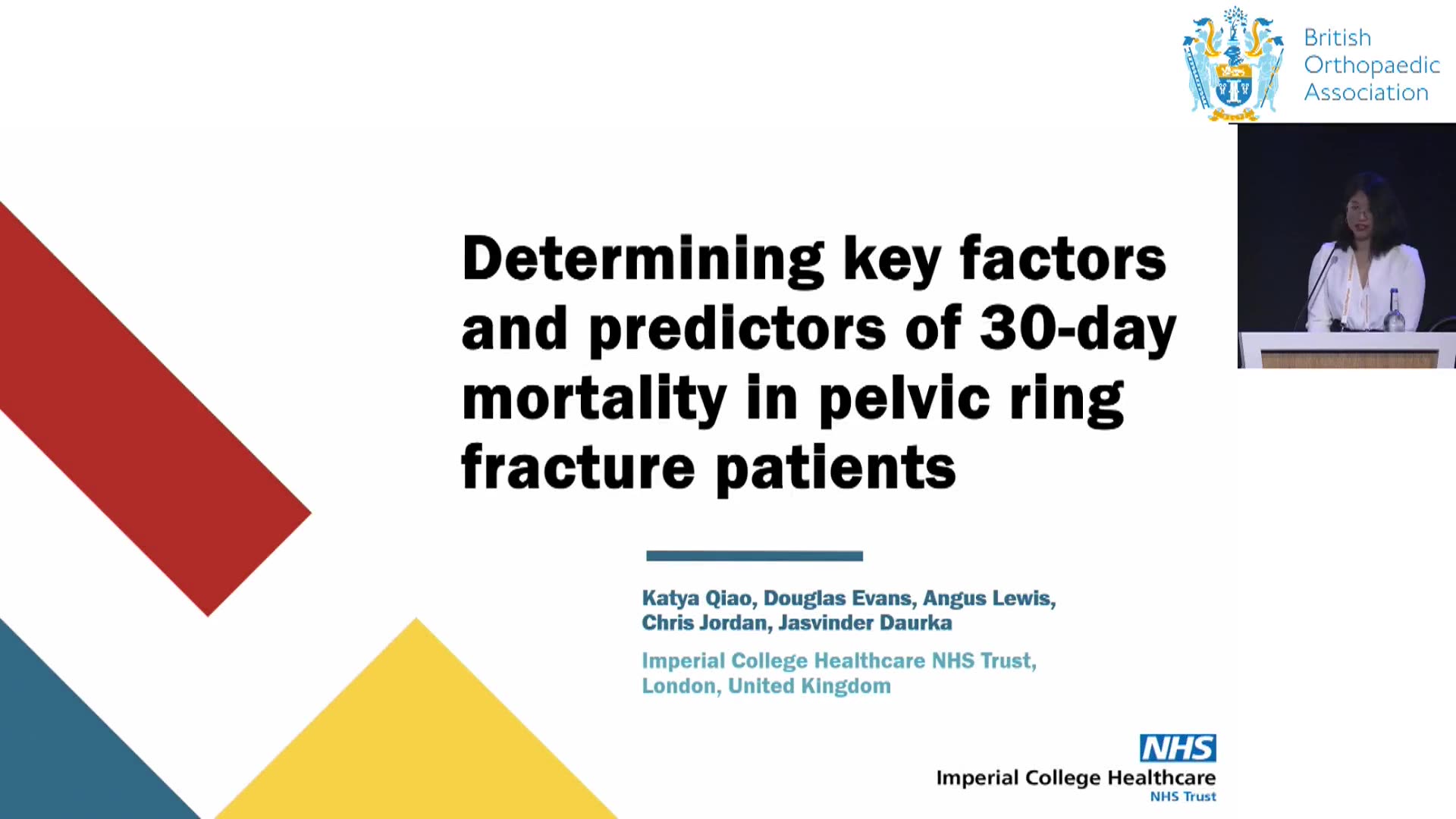Please login to view this media

- Talk
- 24/09/2021
- UK
Determining Key Factors and Predictors of 30-day Mortality in Pelvic Ring Fracture Patients
Description
The presentation by Kat Qiao focuses on a research project analyzing the key factors influencing 30-day mortality rates in patients with pelvic ring fractures. The presentation begins with an introduction from Kat, who discloses there are no conflicts of interest. She notes that while pelvic ring fractures are uncommon, constituting only 2-8% of skeletal injuries, they carry a high mortality risk, primarily due to high-energy trauma and major hemorrhage.
Using a sample of 1,000 patients derived from the Trauma Audit and Research Network database at St Mary's Hospital, London, the study seeks to identify specific variables that contribute to mortality risks within 30 days post-injury. Significant findings include the importance of Glasgow Coma Scale (GCS) scores, age, fracture type, and the presence of chest injuries as predictive factors of mortality.
The study highlights several methodologies, including multiple logistic regression and the elimination of variables through backward elimination, ultimately determining that a lower GCS score and type-C fractures correlate with higher mortality risks. Further, it addresses limitations, such as potential overfitting due to the use of backward elimination and the exclusive use of data from a single hospital, suggesting future research should incorporate data from various trauma centers to enhance the model's applicability.
Audience members engage with Kat, posing questions that delve into the interplay between head and pelvic injuries, the influence of demographic factors like age and gender on outcomes, and the implications of intra-abdominal injuries on mortality rates. Kat remains responsive, acknowledging the study's limitations and the need for further research on various trauma-related variables.